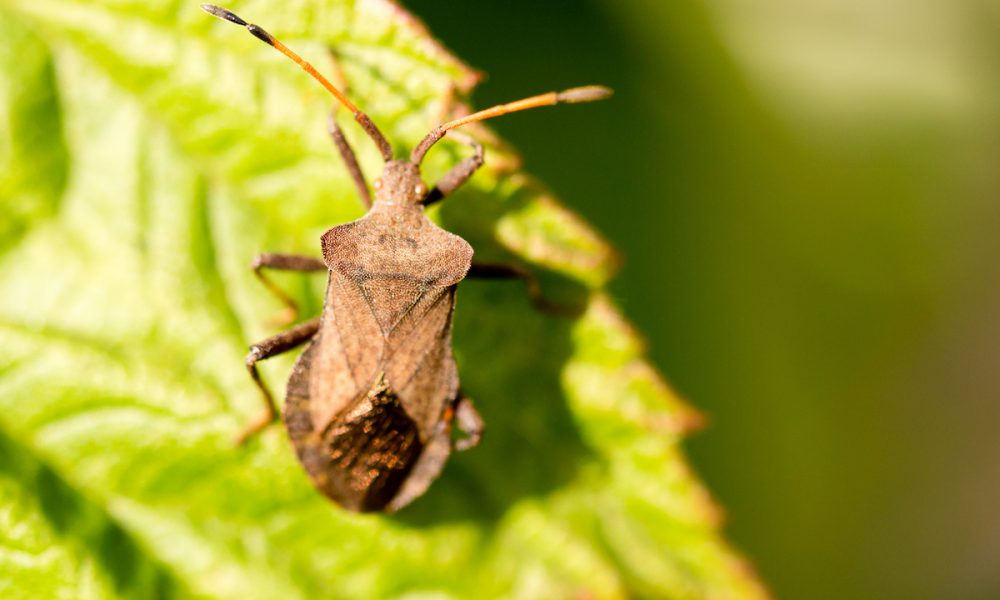
If you live in the south and have St. Augustine grass or Zoysia grass, you could be entertaining a whole troop of chinch bugs. They suck your grass blades dry and then they inject a poison that kills them. They can kill patches or your entire lawn.
Chinch Bug
Blissus leucopterus also known as the true chinch bug is a small North American insect in the order Hemiptera and family Blissidae. It is the most commonly encountered member of the genus Blissus, which are all known as chinch bugs.
It takes chinch bugs about four to six weeks to mature. Nymphs range in size from 1/32 to 1/5 inch. They have a telltale white stripe across their bodies. The wings rest flat over the back of the insect and there is a black spot between the wings. Adults may be long-winged or short-winged. Adult chinch bugs are dark brown or red with white wings and are about 3 to 4mm in length. Young nymphs are about half the size of a pinhead – they start out orange red in color with a pale whitish band across their abdomens. As they molt through the five ensuring growth stages, nymphs gradually change color from red to orange to black and develop wing pads as they develop into adults.
This tiny pest causes millions of dollars in damage per year, as homeowners seek to control chinch bug outbreaks on their lawn.
Can Chinch Bugs Hurt Humans or Animals?
Chinch bugs bite the grass they inhabit and drain the nutrients from the grass blades of a lawn. Unlike the grass that they destroy at every bite, these bugs are considered harmless to humans. They are capable of biting grass but do not cause harm to humans because they are unable to break the skin.
How do I know I have Chinch Bugs?
Grass attacked by chinch bugs looks like grass suffering from drought. Damaged areas first appear as small, irregular patches, which enlarge into large patches of dead, brown grass as the insects spread.
Chinch bug adults and nymphs can cause significant feeding damage by inserting its straw-like mouthparts into the plant tissue and sucking out the plant fluids while injecting a toxin into the plant which clogs the vascular system and eventually causes the grass to yellow, turn reddish brown, and eventually die.
Chinch bugs love open, sunny areas. They typically start along driveways and sidewalks. The affected grass blades wilt, turn yellow-brown, then dry out and die. Chinch bug populations frequently go unnoticed because of their small size and coloration, which blends in with turfgrass and thatch. Chinch bug damage may be masked during periods of drought. Chinch bug damage is often less noticeable during the spring and early summer. Damage frequently appears from early July through late August when the insects are actively feeding.
Eliminating and Controlling Chinch Bugs
It is important to contact a Professional to discuss eliminating this problem and keeping it under control with a seasonal plan.
Contact Us
Choose Proactive Pest Control for professional, comprehensive, guaranteed pest and lawn management. The pros at Proactive will work diligently to gain your trust, confidence, and your total satisfaction. CALL US TODAY at 770-800-PEST to schedule a free, no obligation inspection and evaluation for your home or business. Or, contact us for a FREE consultation. Let us show you why Proactive Pest Control is northeast Georgia’s first choice for pest, termite, and lawn services.